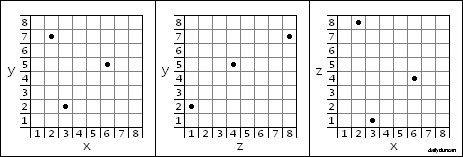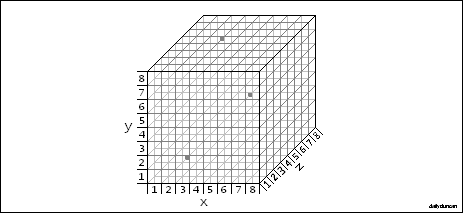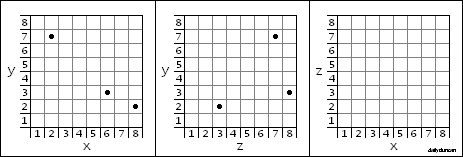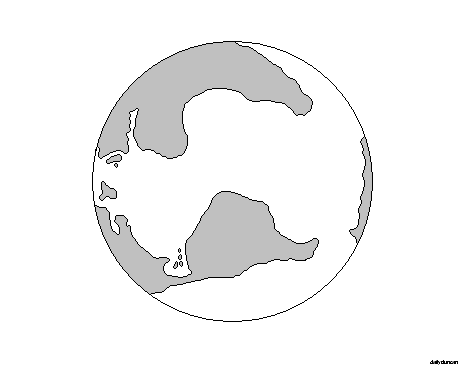If you’ve ever watched a science fiction show, such as Star Trek or Babylon 5, then you likely find the idea of space travel very intriguing. Imagine stars streaking past your solar windshield as your ship comfortably cruises from world to world in a matter of hours. But aside from the technological and physical impossibilities of such travel, there is another limitation which ensures that we will never command a Galaxy-class starship: our dimensional perception.
In the world of Star Trek, whenever two ships encountered one another, they would always be aligned to the same axis. This makes sense to us because in classical flight, which takes place on Earth, all soaring vessels are tethered to the ground by gravity, requiring that they be oriented in a unified manner to combat this force. In space, however, there is no gravity or pole to which we can reference our orientation, so there’s no reason why two ships should be aligned the same way when they meet. But we aren’t here to poke black holes in classic works of science fiction, however entertaining that might be, we’re here to find out why we aren’t fit for duty in the Federation.
We live in a three dimensional world, but we do not interact with all three dimensions equally. The prime dimensions of our experience are the x and z axes because they are the ones in which we move the most freely. We scarcely travel up or down, except to reach another horizontal plane on which we can interact. Even fish and birds, though they move up and down freely, experience the world in the same way we do, for their bodies must remain aligned in relation to the Earth.
Our bodily systems of digestion and circulation are also intended to function most effectively when our bodies are properly oriented with the ground beneath our feet. In addition, our eyes are engineered to take in a wider range of horizontal information than vertical, converting that information into a two-dimensional mental image. Likely because of our upbringing in a world dominated by two dimensions, and the nature of vision itself, our imagination is conditioned to perceive the world in this way. When we imagine a location, we do not imagine a three-dimensional rendering of that place, but merely a two-dimensional picture. This is why maps are drawn from a top-down view – the y-axis just isn’t as relevant to our experience. Another reason could be that we have traditionally used use two-dimensional means of communicating images, such as drawing on paper, which only allow us to effectively portray two dimensions at a time.
To illustrate the difficulty in interpreting space this way, let’s take a look at some grids plotting three three-dimensional points.
Here’s what it would look like if we combine these grids into one three-dimensional chart:
Try to solve for the position of the three points in the final grid of the image below.
Our two-dimensional approach to spacial interpretation makes us totally unfit for life in space, where free movement and rotation is available in all three dimensions. This has been proven by the limited success of video games which feature six degrees of freedom, such as Star Luster and the Wing Commander series. Though many of these titles are ingenious in concept and design, gamers found themselves both astonished and confounded by total planar liberation. Many developers have abandoned such design in favor of a two-dimensional interpretation of space travel, where vessels maintain a consistent, unified orientation.
Behold, the Earth from a perfectly legitimate perspective:
Whether engaging in a starship dogfight, navigating an asteroid field or simply plotting a leisurely interstellar cruise, those of us raised on the surface of a planet are dangerously unqualified for such tasks. It is possible that we could be conditioned through the use of holograms and flight simulators, to interpret our surroundings in a manner consistent with the demands of space travel. If that didn’t work, raising children in space could enable them to comprehend and navigate three dimensions quite easily, but there’s only one way to find out, NASA.



